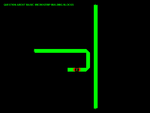jiripolivka
Advanced Member level 5

- Joined
- May 21, 2010
- Messages
- 2,831
- Helped
- 832
- Reputation
- 1,662
- Reaction score
- 803
- Trophy points
- 1,393
- Location
- Santa Barbara
- Activity points
- 22,010
But doesn't that require a linear frequency sweep?
I do not see why everybody wants the linear frequency sweep. The resulting distance scale may be not exactly linear,. so you have to calibrate it. Try to use a ruler for the distance, etc.






